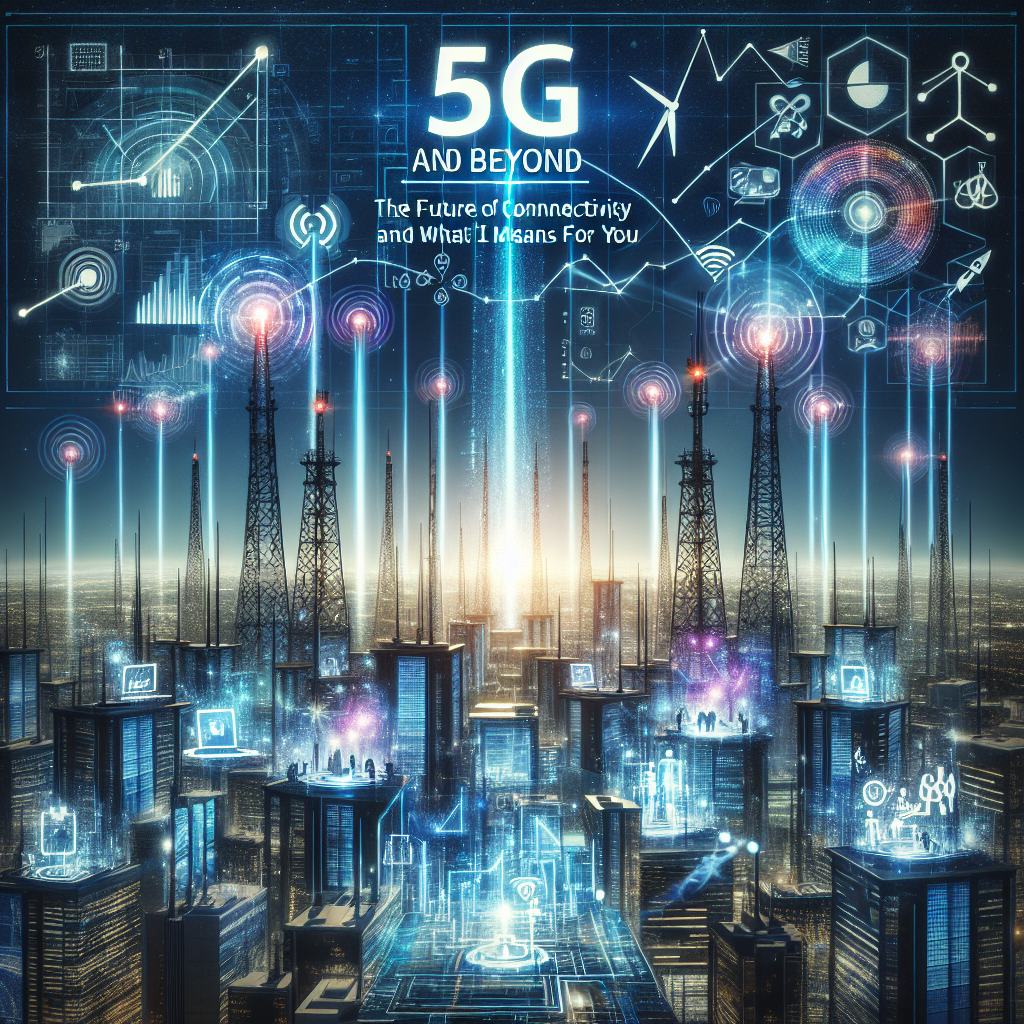5G and Beyond: The Future of Connectivity and What It Means for You
As we advance further into the 21st century, the digital landscape continues to evolve at a rapid pace. The deployment of 5G technology marks a significant milestone in this journey, promising to revolutionize connectivity with unprecedented speed, efficiency, and potential. But what lies beyond 5G? As we explore the future of connectivity, we seek to understand what these advancements mean for individuals, industries, and society as a whole.
The Promise of 5G
The introduction of 5G technology has been met with both anticipation and excitement — and for good reason. Offering data transfer rates up to 100 times faster than its predecessor, 4G, 5G provides near-instantaneous network responses. This low latency is crucial for applications such as online gaming, virtual reality (VR), and augmented reality (AR), ensuring seamless user experiences.
Moreover, 5G supports a higher density of connected devices, enabling the growth of the Internet of Things (IoT). This means everything from smart home gadgets to complex industrial machinery can be interconnected, fostering new ecosystems of smart technologies.
Enhanced Mobile Broadband (eMBB): For day-to-day uses, eMBB enhances streaming capabilities and download speeds, transforming how we consume media on mobile devices. High-definition and 4K streaming will become the norm, even in highly congested urban areas.
Massive Machine-Type Communications (mMTC): 5G will drive mMTC by allowing millions of devices to communicate simultaneously. This advancement is crucial in smart cities, where everything from traffic lights to waste management systems can be optimized through real-time data.
Ultra-Reliable Low-Latency Communication (URLLC): Perhaps one of the most transformative aspects of 5G is its potential for URLLC. This capability is essential for mission-critical applications such as remote surgery or autonomous vehicles, where reliable, real-time communication is non-negotiable.
Beyond 5G: The Road to 6G
As we delve into the future, the vision for 6G begins to take shape. While still in the early stages of development, researchers and industry leaders envision 6G providing speeds up to 100 times faster than 5G, with even lower latency. This could unlock possibilities that are currently unimaginable, including advanced holographic communications and fully immersive virtual environments.
Artificial Intelligence and Machine Learning Integration: One potential hallmark of 6G is its integration with artificial intelligence and machine learning. These technologies could autonomously manage networks and optimize connections, ensuring consistently high performance across diverse scenarios and use cases.
Terahertz Frequency Utilization: Unlike the radio frequencies utilized by 5G, 6G may operate on terahertz frequencies, vastly increasing capacity and reducing latency. Although challenges such as signal range and penetration need to be addressed, the terahertz spectrum holds great promise for ultra-fast connectivity.
Human-Centric Connectivity: Future networks may place a stronger emphasis on human-centric connectivity, focusing on user needs and experiences. Personalized network adjustments, intuitive interfaces, and context-aware applications could redefine how we interact with technology.
Implications for You and Society
As connectivity becomes faster and more ubiquitous, its implications will be far-reaching, touching every aspect of modern life.
Healthcare: Enhanced connectivity can lead to improved healthcare outcomes. Remote diagnostics, telemedicine, and even robotic surgeries could become more sophisticated and widely available, particularly benefiting rural and underserved communities.
Work and Productivity: For businesses, these advancements can transform the way we work. Remote and hybrid work models will be more effective, supported by reliable and high-speed connections. Industries such as manufacturing and logistics will benefit from automation and real-time data analytics.
Education: Educational opportunities will become more accessible and immersive. Virtual classrooms can offer interactive and personalized learning experiences, reaching students across geographical and socioeconomic barriers.
Security and Privacy Concerns: However, with increased connectivity comes heightened security and privacy concerns. As more devices become interconnected, safeguarding personal data and preventing cyber threats will require continuous innovation and robust regulatory frameworks.
Conclusion
The advent of 5G marks just the beginning of a new era in connectivity, one that holds immense promise and potential. As we look to the future with 6G and beyond, the emphasis will be on creating networks that enhance human experiences, drive innovation, and build a more connected world. Whether it is through more effective communication, optimized industrial processes, or enriched personal interactions, the future of connectivity promises to be both exciting and transformative. As we prepare to embrace these changes, understanding and adapting to this evolving landscape will be key in harnessing the full potential of a truly connected future.
